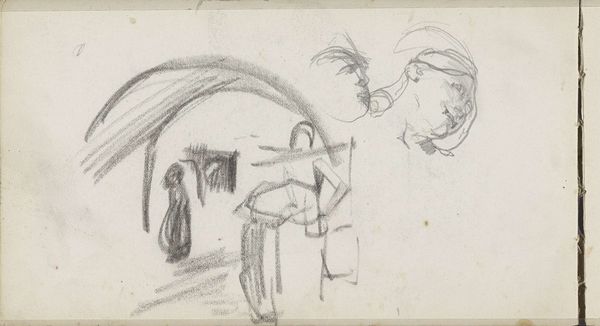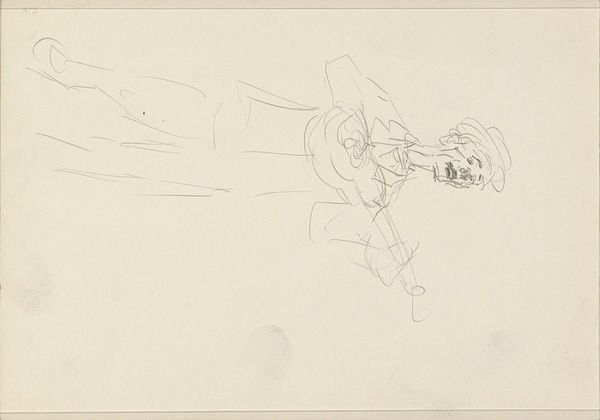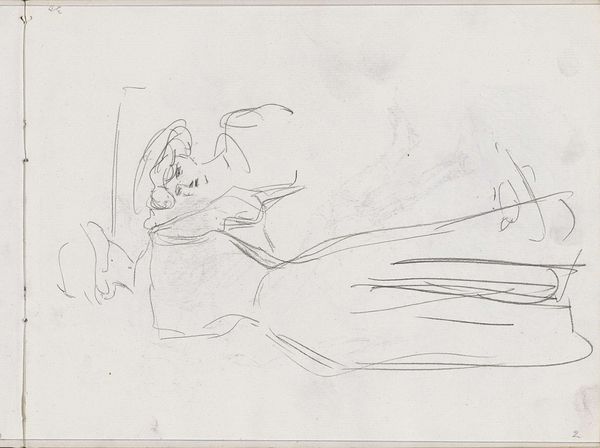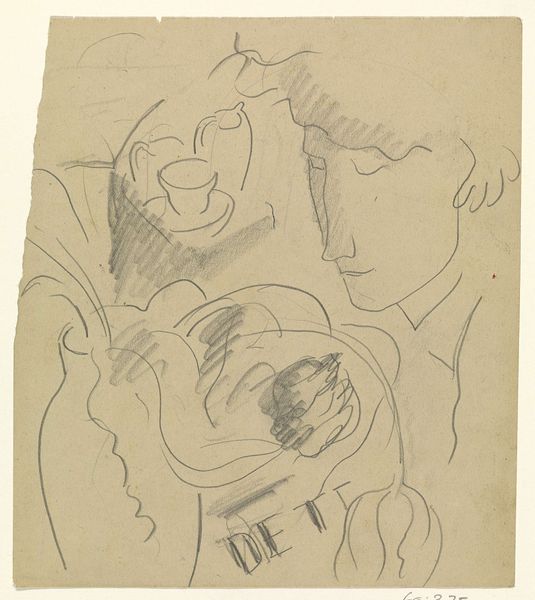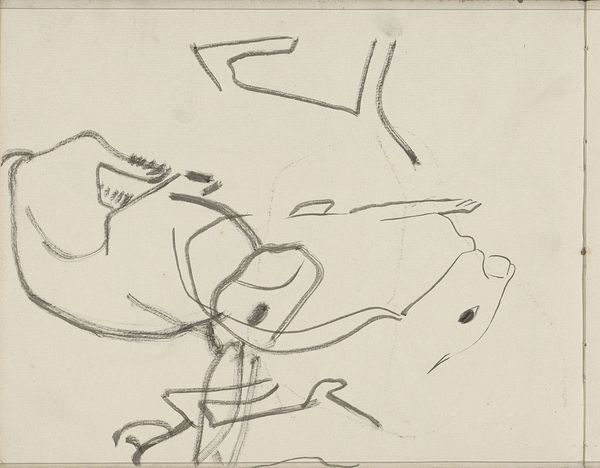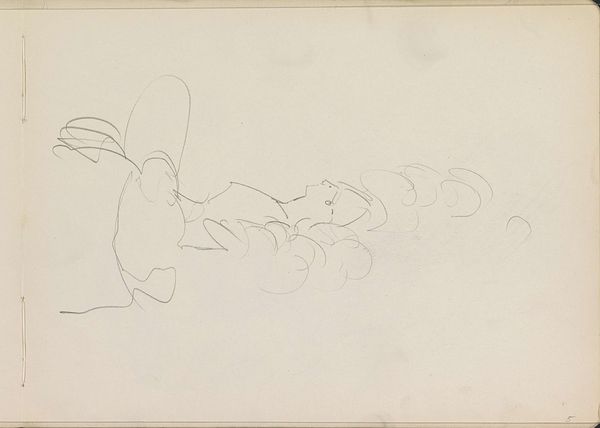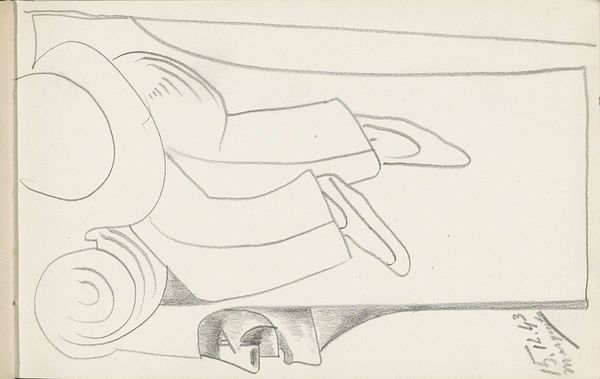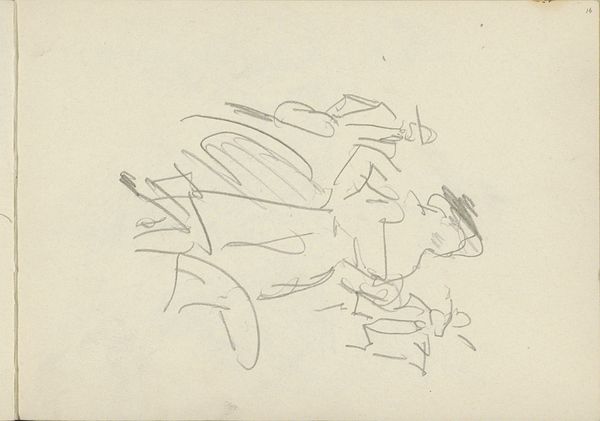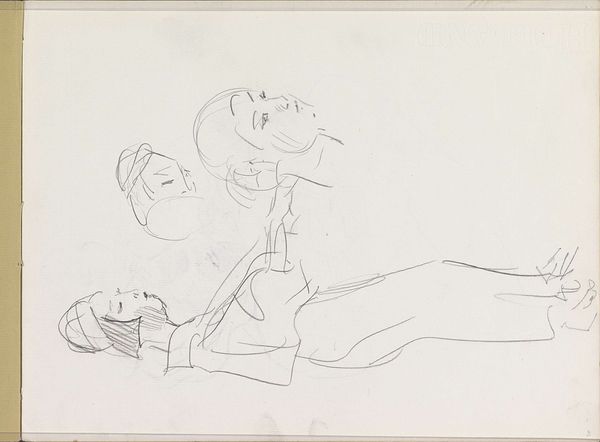
Copyright: Rijks Museum: Open Domain
Curator: Editor: So, this is "Zittende vrouw en figuurstudies," a pencil drawing by Carel Adolph Lion Cachet from 1896. It seems very casual, almost like a glimpse into the artist's private sketchbook. What can you tell me about this piece? Curator: This work reveals much about artistic production at the time. We see here the artist’s hand at play, experimenting with form and line, using inexpensive materials. Cachet, rather than aiming for a finished "masterpiece", embraced the immediacy and intimacy afforded by pencil and paper. Do you consider this "high art"? Editor: That's an interesting question. I hadn't really thought about it that way, but I suppose I generally think of something hanging in a museum as 'high art'. This definitely feels different from, say, an oil painting. Was Cachet deliberately blurring the lines between fine art and the everyday? Curator: Exactly. This drawing speaks to a shift in the late 19th century. The rise of industrial production meant readily available and affordable materials. Artists, now liberated, could engage in the act of creating for its own sake, disrupting established hierarchies that privileged academic painting and sculpture. Where does the *labor* fit in, and its economic context, in the making of such a drawing? Editor: I guess before, materials were more precious and maybe dictated what art was being produced. The accessibility of pencils and paper meant Cachet could just play around with representing the figure. He wasn’t wasting valuable resources, just sketching in a personal sketchbook. Curator: Precisely. This drawing offers an opportunity to challenge traditional boundaries between art and craft. We witness a new mode of artistic creation that challenges art history! Editor: That’s a really different way of seeing it. I was focused on the subject of the drawing but didn’t think about the broader cultural context of artistic production and materiality. Curator: And hopefully, from now on, you will! This helps you expand your understanding and push boundaries between traditional notions.
Comments
No comments
Be the first to comment and join the conversation on the ultimate creative platform.

